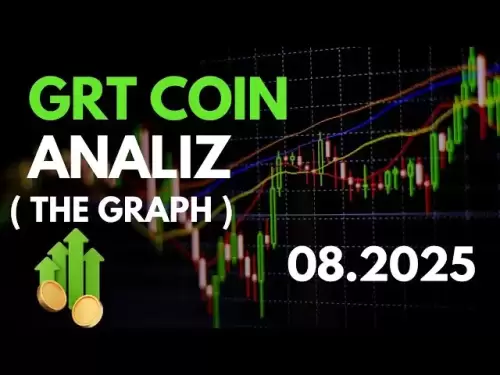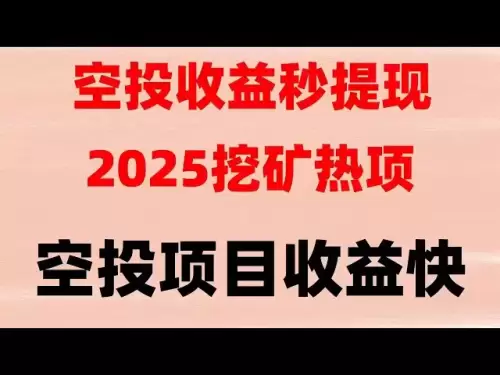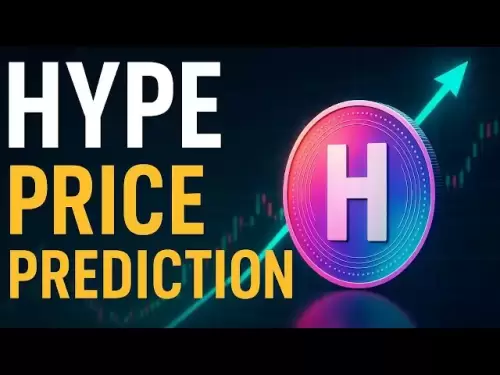-
 Bitcoin
Bitcoin $119300
2.40% -
 Ethereum
Ethereum $4254
-0.20% -
 XRP
XRP $3.184
-1.38% -
 Tether USDt
Tether USDt $1.000
0.00% -
 BNB
BNB $803.9
0.58% -
 Solana
Solana $183.1
1.50% -
 USDC
USDC $0.0000
0.01% -
 Dogecoin
Dogecoin $0.2339
-2.87% -
 TRON
TRON $0.3384
0.88% -
 Cardano
Cardano $0.8018
-0.29% -
 Hyperliquid
Hyperliquid $45.13
3.14% -
 Chainlink
Chainlink $22.10
0.96% -
 Stellar
Stellar $0.4439
-0.94% -
 Sui
Sui $3.875
-0.73% -
 Bitcoin Cash
Bitcoin Cash $570.7
0.24% -
 Hedera
Hedera $0.2589
-2.90% -
 Ethena USDe
Ethena USDe $1.001
-0.01% -
 Avalanche
Avalanche $23.83
-1.73% -
 Litecoin
Litecoin $123.8
2.61% -
 Toncoin
Toncoin $3.351
-1.13% -
 UNUS SED LEO
UNUS SED LEO $9.103
1.13% -
 Shiba Inu
Shiba Inu $0.00001356
-1.40% -
 Uniswap
Uniswap $10.93
-0.19% -
 Polkadot
Polkadot $4.057
-1.97% -
 Dai
Dai $1.000
0.01% -
 Cronos
Cronos $0.1646
4.66% -
 Ethena
Ethena $0.7974
8.11% -
 Pepe
Pepe $0.00001208
-2.89% -
 Bitget Token
Bitget Token $4.445
-1.70% -
 Monero
Monero $268.8
-2.00%
Elastos (ELA) currency trading operation steps graphic tutorial
Understanding Elastos (ELA), a decentralized blockchain platform, is crucial before engaging in cryptocurrency trading on reputable exchanges like Binance and Huobi, mindful of trading fees to optimize earnings.
Dec 31, 2024 at 05:55 am
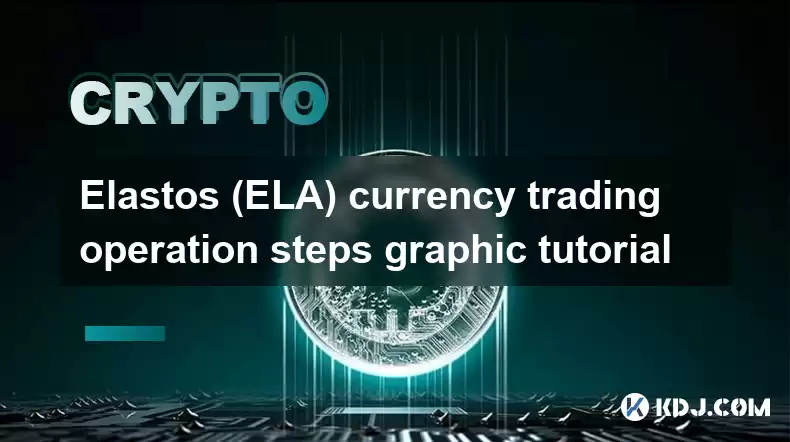
Key Points:
- Understanding the Elastos (ELA) Cryptocurrency
- Selecting a Reliable Cryptocurrency Exchange
- Funding Your Exchange Account
- Placing a Buy or Sell Order for ELA
- Monitoring and Managing Your ELA Holdings
- Understanding Cryptocurrency Trading Fees
Step 1: Understanding the Elastos (ELA) Cryptocurrency
Elastos (ELA) is a decentralized, open-source blockchain platform that aims to create a new internet infrastructure. It incorporates advanced technologies such as smart contracts, sidechains, and decentralized autonomous organizations (DAOs) to support a wide range of applications, including those in the realms of digital identity, data security, and decentralized finance.
Step 2: Selecting a Reliable Cryptocurrency Exchange
To trade ELA, you'll need to choose a reputable cryptocurrency exchange that supports ELA trading and has a strong security track record. Consider exchanges like Binance, Huobi, and OKEx, which offer ample liquidity, competitive fees, and a user-friendly trading interface.
Step 3: Funding Your Exchange Account
Once you've selected an exchange, you'll need to fund your account to purchase ELA. This typically involves depositing fiat currency via bank transfer, credit/debit card, or other payment methods supported by the exchange. Some exchanges also allow direct cryptocurrency deposits for faster and cheaper transactions.
Step 4: Placing a Buy or Sell Order for ELA
Once your account is funded, you can proceed to place a buy or sell order for ELA. Navigate to the exchange's trading platform and select the ELA trading pair (e.g., ELA/USDT). Enter the desired quantity of ELA you want to buy or sell and the price you're willing to accept.
Step 5: Monitoring and Managing Your ELA Holdings
After executing your order, you can track your ELA holdings within your exchange account. Keep an eye on market fluctuations and make adjustments to your trading strategy as necessary. You can also consider storing your ELA in a secure cryptocurrency wallet for added security.
Step 6: Understanding Cryptocurrency Trading Fees
Cryptocurrency exchanges typically charge a range of fees for trading services. These may include trading fees, maker/taker fees, deposit/withdrawal fees, and network fees. Be aware of the fee structure before committing to any trades to minimize unexpected costs.
FAQs:
What is the Elastos (ELA) cryptocurrency?
Elastos is a decentralized blockchain platform that enables the creation of new internet applications and digital services with a focus on privacy, security, and data sovereignty.
What exchanges support ELA trading?
Popular cryptocurrency exchanges that support ELA trading include Binance, Huobi, OKEx, and KuCoin.
How can I buy ELA cryptocurrency?
To buy ELA, you'll need to sign up for an account on a reputable cryptocurrency exchange, fund your account, and place a buy order for ELA using the exchange's trading platform.
Where can I store my ELA cryptocurrency?
You can store your ELA cryptocurrency in the exchange's wallet or transfer it to a secure hardware wallet or software wallet for enhanced security.
What are the key features of the Elastos blockchain platform?
Elastos enables the creation of decentralized applications (dApps), smart contracts, and sidechains, while providing support for digital asset management, digital identity services, and a global file system.
What is the native token of the Elastos blockchain?
ELA is the native token of the Elastos blockchain and is used to pay for network fees, staking, and other transactions within the ecosystem.
Disclaimer:info@kdj.com
The information provided is not trading advice. kdj.com does not assume any responsibility for any investments made based on the information provided in this article. Cryptocurrencies are highly volatile and it is highly recommended that you invest with caution after thorough research!
If you believe that the content used on this website infringes your copyright, please contact us immediately (info@kdj.com) and we will delete it promptly.
- BlockDAG's T6900 Crypto Presale Buzz: Is the $0.0016 Entry the Real Deal?
- 2025-08-11 09:08:47
- Animoca Brands' Cool Cats Investment: A Purr-fect Match for the NFT Future
- 2025-08-11 09:08:47
- XRP, Luminite Wallet, and DeFi Access: A New Era?
- 2025-08-11 09:08:47
- Dogecoin, SHIB Whales, and Meme Coins: What's the Latest?
- 2025-08-11 09:08:47
- Bitcoin's Wild Ride: Short Squeezes, $120K Dreams, and What It All Means
- 2025-08-11 09:08:48
- Crypto Treasury, Capital Shift, and Startup Raises: What's the Deal?
- 2025-08-11 09:08:48
Related knowledge

How to purchase Aragon (ANT)?
Aug 09,2025 at 11:56pm
Understanding Aragon (ANT) and Its PurposeAragon (ANT) is a decentralized governance token that powers the Aragon Network, a platform built on the Eth...

Where to trade Band Protocol (BAND)?
Aug 10,2025 at 11:36pm
Understanding the Role of Private Keys in Cryptocurrency WalletsIn the world of cryptocurrency, a private key is one of the most critical components o...

What is the most secure way to buy Ocean Protocol (OCEAN)?
Aug 10,2025 at 01:01pm
Understanding Ocean Protocol (OCEAN) and Its EcosystemOcean Protocol (OCEAN) is a decentralized data exchange platform built on blockchain technology,...

Where can I buy UMA (UMA)?
Aug 07,2025 at 06:42pm
Understanding UMA and Its Role in Decentralized FinanceUMA (Universal Market Access) is an Ethereum-based decentralized finance (DeFi) protocol design...

How to buy Storj (STORJ) tokens?
Aug 09,2025 at 07:28am
Understanding Storj (STORJ) and Its Role in Decentralized StorageStorj is a decentralized cloud storage platform that leverages blockchain technology ...
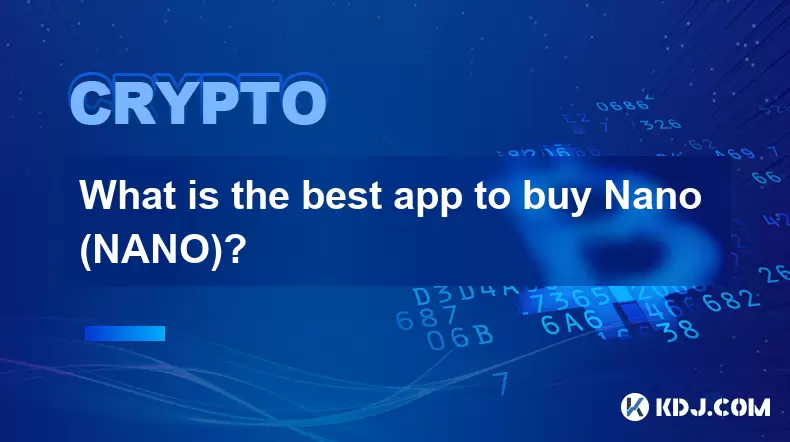
What is the best app to buy Nano (NANO)?
Aug 09,2025 at 03:35am
Understanding Nano (NANO) and Its Unique FeaturesNano is a feeless, instant cryptocurrency designed for fast peer-to-peer transactions. Unlike many ot...

How to purchase Aragon (ANT)?
Aug 09,2025 at 11:56pm
Understanding Aragon (ANT) and Its PurposeAragon (ANT) is a decentralized governance token that powers the Aragon Network, a platform built on the Eth...

Where to trade Band Protocol (BAND)?
Aug 10,2025 at 11:36pm
Understanding the Role of Private Keys in Cryptocurrency WalletsIn the world of cryptocurrency, a private key is one of the most critical components o...

What is the most secure way to buy Ocean Protocol (OCEAN)?
Aug 10,2025 at 01:01pm
Understanding Ocean Protocol (OCEAN) and Its EcosystemOcean Protocol (OCEAN) is a decentralized data exchange platform built on blockchain technology,...

Where can I buy UMA (UMA)?
Aug 07,2025 at 06:42pm
Understanding UMA and Its Role in Decentralized FinanceUMA (Universal Market Access) is an Ethereum-based decentralized finance (DeFi) protocol design...

How to buy Storj (STORJ) tokens?
Aug 09,2025 at 07:28am
Understanding Storj (STORJ) and Its Role in Decentralized StorageStorj is a decentralized cloud storage platform that leverages blockchain technology ...

What is the best app to buy Nano (NANO)?
Aug 09,2025 at 03:35am
Understanding Nano (NANO) and Its Unique FeaturesNano is a feeless, instant cryptocurrency designed for fast peer-to-peer transactions. Unlike many ot...
See all articles





















